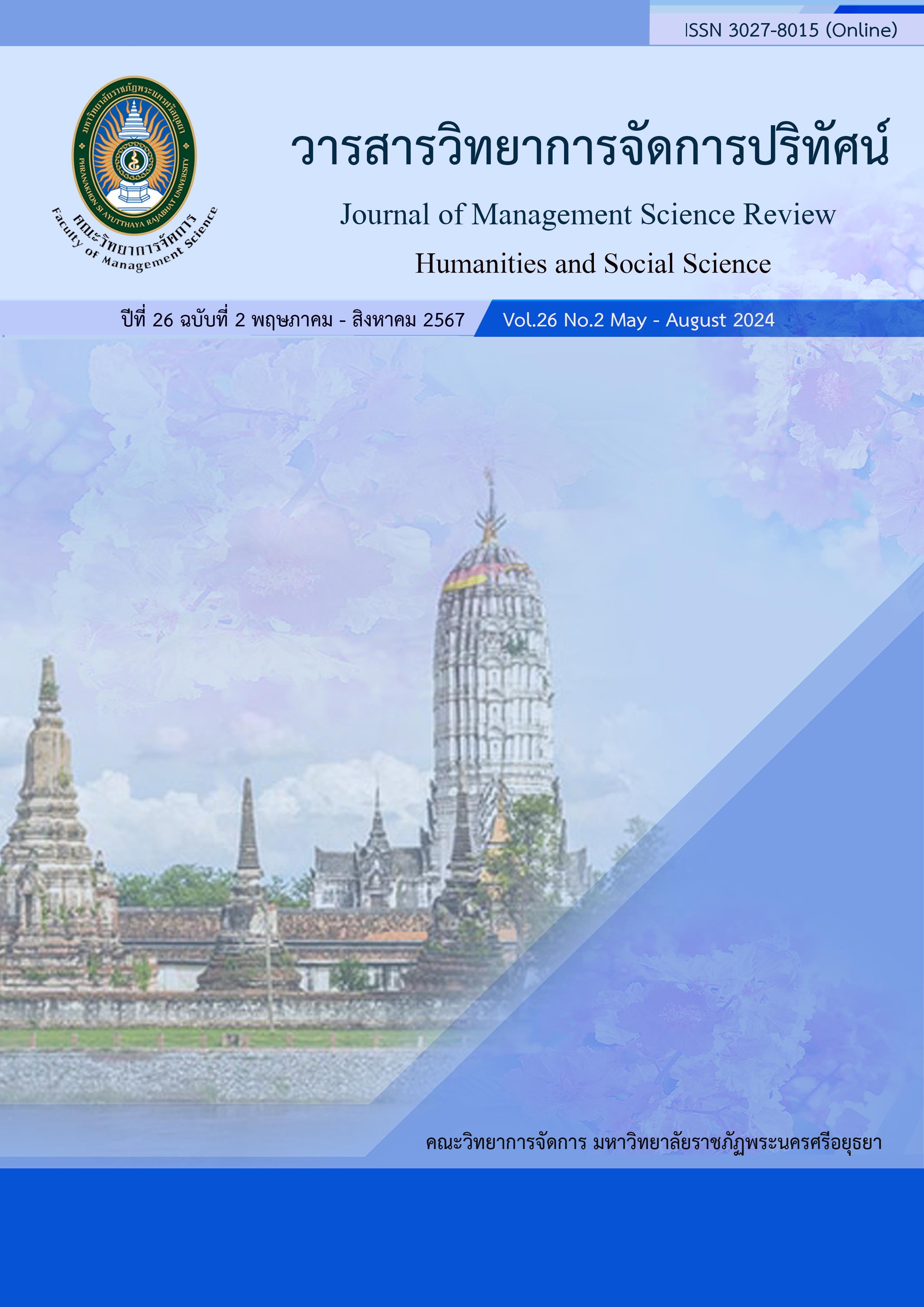การเปรียบเทียบต้นทุนฐานกิจกรรมและผลตอบแทนจากการปลูกอ้อย ระหว่างการรดน้ำแบบวิธีน้ำหยดกับวิธีน้ำราด กรณีศึกษาเกษตรกรผู้ปลูกอ้อย ตำบลหัวทะเล อำเภอบำเหน็จณรงค์ จังหวัดชัยภูมิ
คำสำคัญ:
ต้นทุนฐานกิจกรรม, ผลตอบแทน, การปลูกอ้อย, ระบบน้ำหยด, ระบบน้ำราดบทคัดย่อ
การวิจัยครั้งนี้มีวัตถุประสงค์เพื่อ 1) วิเคราะห์ต้นทุนฐานกิจกรรมของการปลูกอ้อยระหว่างการรดน้ำแบบวิธีน้ำหยดและวิธีน้ำราด 2) เปรียบเทียบผลตอบแทนและต้นทุนฐานกิจกรรมจากการปลูกอ้อยระหว่างการรดน้ำแบบวิธีน้ำหยดและวิธีน้ำราด รูปแบบการศึกษาเป็นงานวิจัยเชิงคุณภาพ (Qualitative Research) โดยใช้เครื่องมือการสนทนากลุ่ม (Focus Group) จากนั้นการสัมภาษณ์เชิงลึก (In-depth Interview) และการสังเกตการณ์ (Observation) กลุ่มตัวอย่างการศึกษา ได้แก่ เกษตรกรผู้ปลูกอ้อยรายย่อยที่ขึ้นทะเบียน จำนวน 10 คน และผู้ที่มีส่วนร่วมในการปลูก จำนวน 6 คน ใช้วิธีการคัดเลือกกลุ่มตัวอย่างแบบจำเพาะเจาะจง (Purposive Sampling)
ผลการวิจัยพบว่า การปลูกอ้อยที่รดน้ำแบบวิธีน้ำหยดมีต้นทุนฐานกิจกรรมทั้งสิ้น 195,752.90 บาท หรือคิดเป็นต้นทุนฐานกิจกรรมต่อไร่ 11,514.88 บาท และการรดน้ำแบบวิธีน้ำราดมีต้นทุนฐานกิจกรรมทั้งสิ้น 100,425.42 บาท หรือคิดเป็นต้นทุนฐานกิจกรรมต่อไร่ 10,042.54 บาท ทั้งนี้เมื่อเปรียบเทียบต้นทุนฐานกิจกรรม การปลูกอ้อยโดยรดน้ำแบบวิธีน้ำหยดจะมีต้นทุนที่มากกว่าการรดน้ำแบบวิธีน้ำราด 1,472.34 บาทต่อไร่ สำหรับผลตอบแทนจากการปลูกอ้อยที่วิธีรดน้ำแบบวิธีน้ำหยดได้ผลตอบแทนมากกว่าวิธีน้ำราดเป็นเงิน 3,890.39 บาทต่อไร่ และรายได้จากการขายอ้อยที่รดน้ำแบบวิธีน้ำหยดได้มากกว่าการรดน้ำแบบวิธีน้ำราด 5,362.73 บาทต่อไร
เอกสารอ้างอิง
Department of Agriculture. (2004). Academic Papers Sugarcane. https://www.agkb.lib.ku.ac.th/doa/search_detail/result/327603.
Field and Renewable Energy Crops Research Institute. (2004). Academic Papers Economic crops. http://www.lib.doa.go.th/multim/e-book/EB00294.pdf
Kaplan,R.S , & Copper, R (1991). (1991). Profit priorities from activity-based costing. Harvard Business Review, 130-135.
Krootboonyong, C. (2011). Management Accounting. se-education.
Krungsri Research. (2023). Industry Outlook 2023 – 2025: Sugar Industry. https://www.krugsri.com/en/research/industry/industry-outlook/agriculture/sugar/io.
MacArthur, J.B. (1996). Activity-based costing to throughput accounting. Strategic Finance, 77 (10), 30.
Maneesri, S. (2002). Guideline for Cost Reduction Using Activity Based Costing System : Case Study of V.P.F. Group Company Limited. [Master’s thesis]. Chiang Mai University.
Office of The Cane and Sugar Board. (2017). Sustainable Sugarcane Management. https://www.ocsb.go.th/wp-content/uploads/2023/03/144-7354.pdf.
_______. (2023). Annual Report to sugarcane plant areas and production 2565-66. https://www.ocsb.go.th/2023/reports-articles/area-yield/21623.
Potchanasin, C., Athipanyakul, T., & Nantajit, C. (2022). Impacts of Policy and Policy and Price Changes on Sugarcane Production in Central Part of Thailand. Journal of Economics and Management Strategy, 10(1), 15-32.
Royal Irrigation Department. (1996). Information on water use to plants in Eastern region. Irrigation Agriculture Department, Ministry of Agriculture and Cooperatives.
Wonprasaid, S., & Girdthai, T. (2015). Soil and Water Management for Ratoon Yield Improvement of Sugarcane in the Northeast. Suranaree University of Technology
Thongsukhowong, A. (2016). Cost Accounting. se-education.
Toommanon, V. (2001). Activity Based Costing : ABC. Bangkok : Ionic, 302.
ttb analytics. (2023). ttb analytics expected in 2023, Agriculturist income for 5 economic crops will be at 833 billion baht, a decrease of 4.7%. https://www.ttbbank.com/th/newsroom/ detail/economic-crops-2566.





